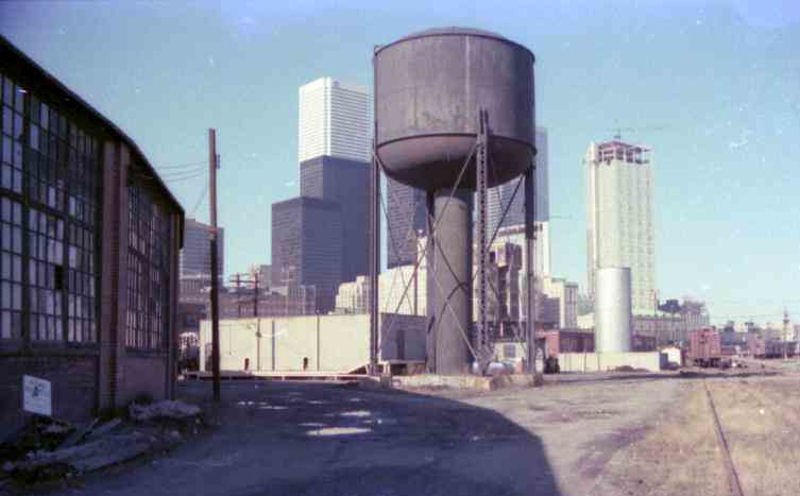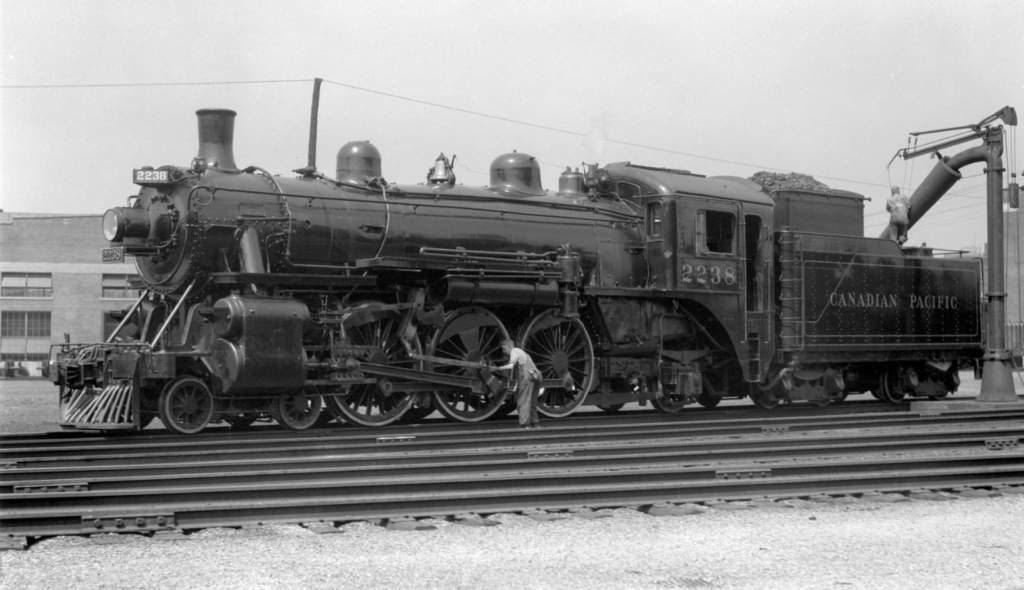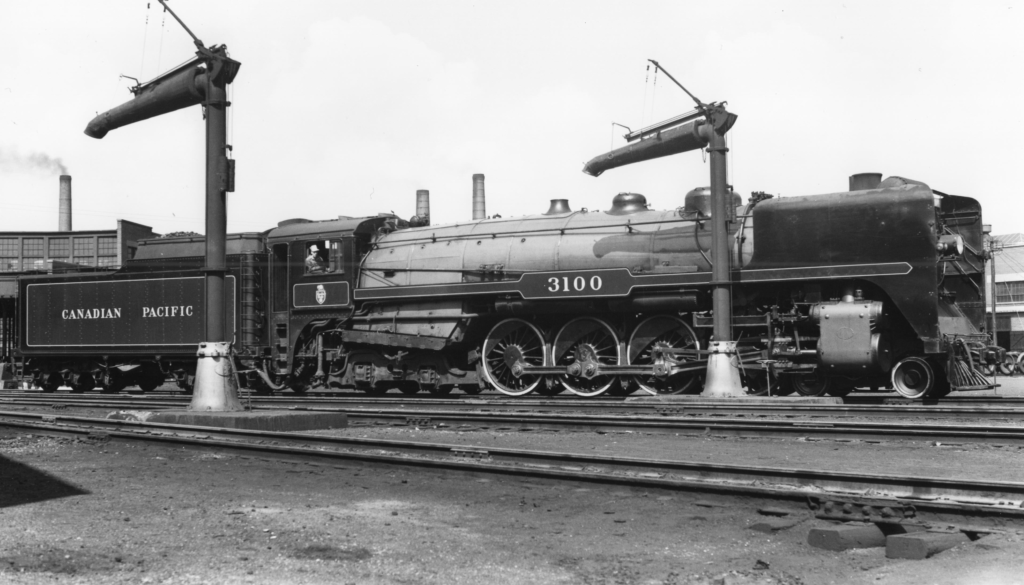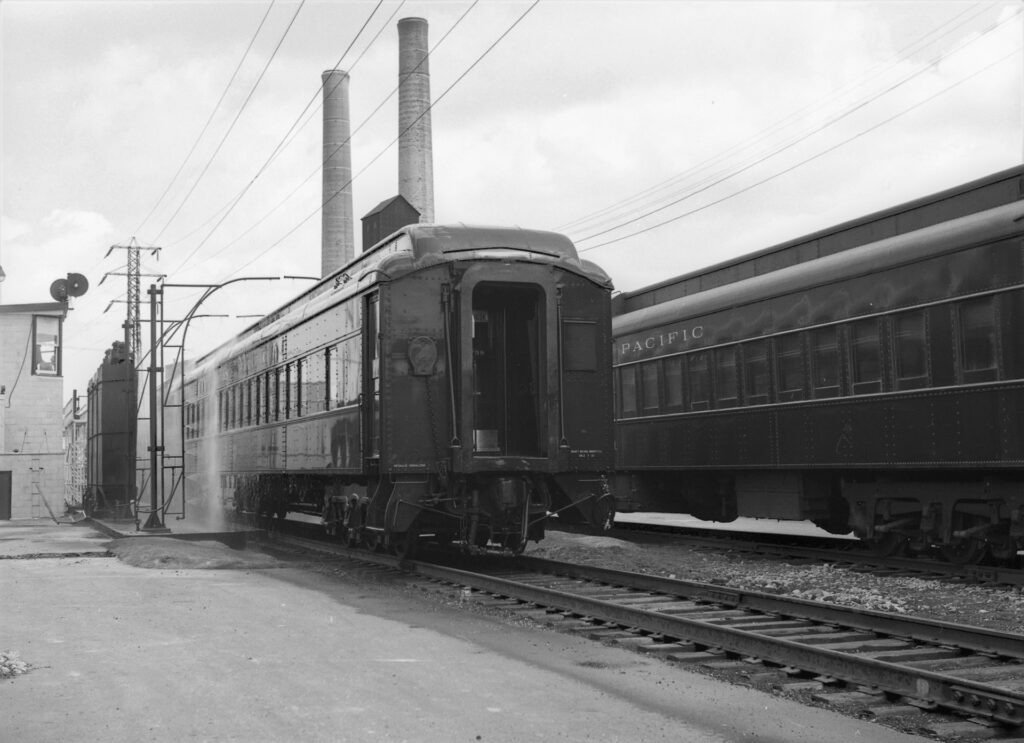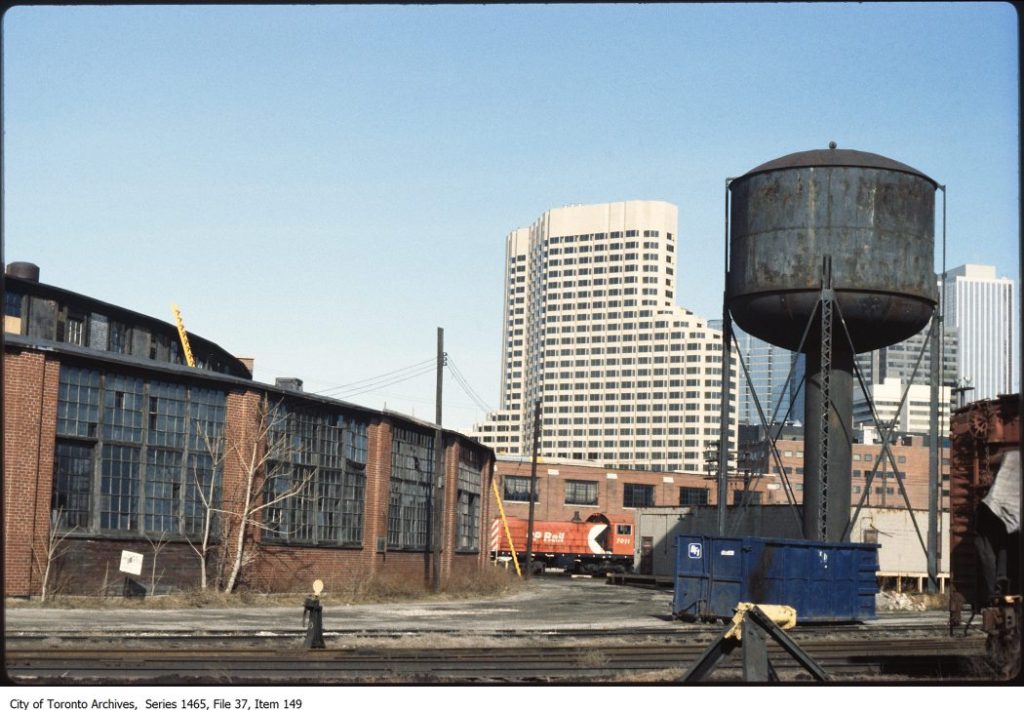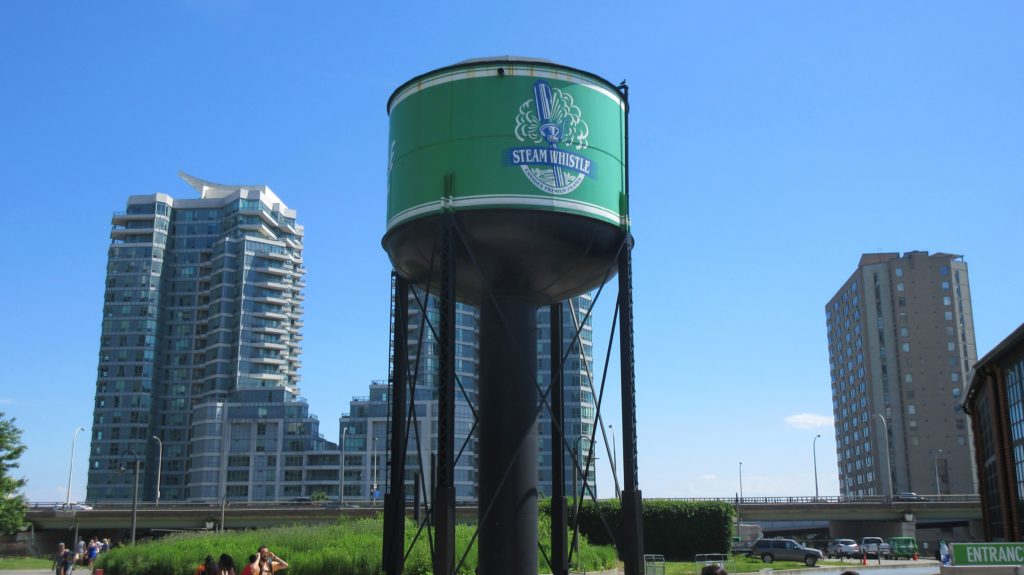During the steam era, water was very necessary for the everyday operations of railroads across the continent. Water was a key ingredient in a steam locomotive’s boiler where it was heated by coal to produce steam. Water towers could be found near many railway stations in both urban and rural areas, as it was often consumed by locomotives much quicker than coal. However, they were universally located at busy railway terminals and divisional points where steam engines could be serviced in a variety of ways before their next departure. Many early water towers had a pipe located on the side of the tower for water to be filled directly, but the majority were connected through underground pipes to one or more water columns in the vicinity.
The water tower in Roundhouse Park remains unmoved from when it was built alongside the John Street Roundhouse in 1929. Capable of holding up to 60,000 gallons of water, it was connected to several water columns near the roundhouse for refilling steam locomotives. However, the water used in our tower had an additional purpose: the cleaning of Canadian Pacific’s passenger car fleet. Historically, the John Street Roundhouse was a facility used exclusively for locomotives and equipment involved in passenger service, while freight equipment was serviced at West Toronto and Lambton. Adjacent to the roundhouse was a coach yard capable of storing up to 450 passenger cars at a time, all of which had to be kept in tip top shape. The quality of which the facilities at John Street were able to keep the equipment it handled was described by railroaders as the “John Street polish”.
After the end of the steam era in 1960, the water columns near the roundhouse were no longer needed and were swiftly removed. The water tower remained for the wash racks until the roundhouse’s closure in 1986, after which the entire facility was donated to the City of Toronto for the future site of a railway museum. The steel exterior of the water tower rusted over the years until after the formation of Roundhouse Park in 1997, after which it was refurbished and is now used as an advertising platform for one of the roundhouse’s tenants, Steam Whistle Brewing.


